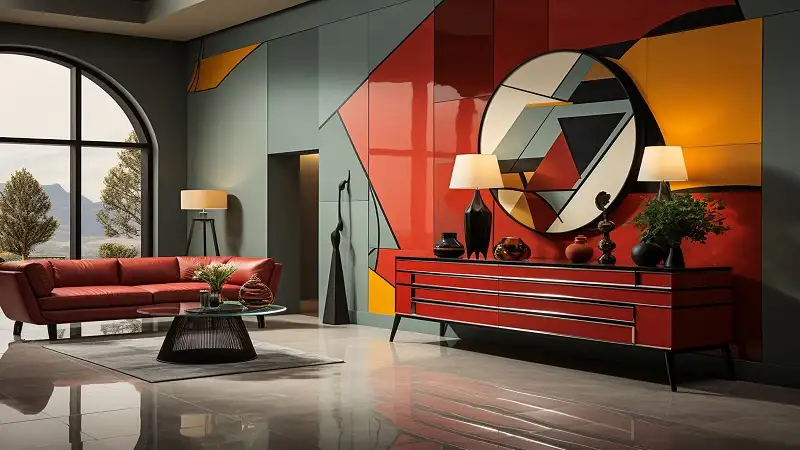Interior design is more than just arranging furniture and selecting color schemes; it is an art and science that enhances the functionality, aesthetic appeal, and overall experience of a space. Whether designing a cozy home, a luxurious hotel, or a modern office, interior design plays a crucial role in influencing mood, productivity, and well-being. In this article, we will explore why interior design is interesting mintpaldecor, the skills required to become an expert in the field, and the impact it has on everyday life.
The Art and Science of Interior Design
Interior design is a fascinating blend of creativity and technical knowledge. Designers must balance beauty with practicality, ensuring that a space not only looks good but also functions well.
1. Creative Expression and Personalization
One of the most interesting aspects of interior design is the ability to express creativity. Unlike other art forms that may be confined to a canvas or sculpture, interior design allows professionals to shape entire environments. Designers use colors, textures, lighting, and materials to create unique atmospheres tailored to their clients’ preferences and lifestyles.
Additionally, every project presents a new challenge. Whether designing a minimalist apartment or a grand traditional home, interior designers must adapt their artistic vision to different styles and needs.
2. Psychological Impact of Design
Interior design affects people’s emotions and behaviors. Colors, lighting, and spatial arrangement can influence moods, productivity, and even health. For instance:
- Warm colors like red and orange create energy and excitement, ideal for restaurants or social spaces.
- Cool tones such as blue and green promote relaxation and are perfect for bedrooms and offices.
- Proper lighting can enhance focus in workspaces or create a cozy ambiance in living rooms.
By understanding these psychological effects, designers can craft spaces that improve quality of life. This is one of the many reasons why interior design is interesting mintpaldecor.
The Functional Side of Interior Design
While aesthetics are essential, interior design also emphasizes functionality. A well-designed space should be comfortable, safe, and efficient.
1. Space Optimization
In urban settings, where space is often limited, designers must find innovative ways to maximize functionality. This includes:
- Multi-purpose furniture like sofa beds or foldable tables.
- Smart storage solutions such as built-in shelves and hidden compartments.
- Open-concept layouts that create an illusion of spaciousness.
These strategies enhance usability without compromising style.
2. Sustainability and Eco-Friendly Designs
Modern interior design is increasingly focusing on sustainability. Eco-friendly materials, energy-efficient lighting, and sustainable furniture help reduce environmental impact while maintaining aesthetic appeal. Examples include:
- Bamboo flooring and recycled wood furniture.
- Energy-efficient LED lighting.
- Indoor plants that improve air quality.
Sustainable design not only benefits the environment but also promotes healthier living spaces.
Skills Required for Interior Designers
Becoming an interior designer requires a combination of artistic ability, technical knowledge, and problem-solving skills. Key skills include:
1. Creativity and Innovation
Designers must think outside the box to create unique and personalized spaces. Keeping up with trends and experimenting with new materials, patterns, and layouts is essential.
2. Technical Knowledge
Understanding architectural principles, lighting design, and color theory is crucial. Designers also use computer-aided design (CAD) software to create detailed layouts and visual presentations.
3. Attention to Detail
A great interior designer pays close attention to details, from the placement of furniture to the selection of accessories, ensuring harmony in every element of the space.
4. Communication and Collaboration
Interior designers work closely with clients, architects, contractors, and suppliers. Strong communication skills help translate ideas into reality while ensuring that projects stay on budget and on schedule.
Why Interior Design is Interesting Mintpaldecor: A Career Perspective
For those considering a career in interior design, the field offers numerous opportunities. From residential and commercial projects to hospitality and retail spaces, interior designers have a wide range of specialties to explore.
1. Diverse Career Paths
Interior designers can work in various industries, including:
- Residential Design: Creating beautiful and functional homes.
- Commercial Design: Designing offices, retail stores, and public spaces.
- Hospitality Design: Enhancing the ambiance of hotels, restaurants, and resorts.
- Exhibition Design: Developing booths and displays for trade shows and events.
Each specialization presents unique challenges and opportunities for creativity.
2. Ever-Evolving Industry
Trends in interior design constantly change, making the profession exciting and dynamic. With advancements in smart home technology, sustainable materials, and innovative designs, interior designers must stay updated to remain competitive.
3. Global Opportunities
Interior design is a globally recognized field with demand in different countries. Designers can work internationally or collaborate with clients from various cultural backgrounds, expanding their creative horizons.
The Future of Interior Design
As technology advances, interior design is evolving in exciting ways. Some emerging trends include:
1. Smart Homes and Automation
With the rise of smart technology, interior designers now incorporate automation into their designs. Features like voice-controlled lighting, temperature regulation, and security systems are becoming standard in modern homes.
2. Biophilic Design
This design approach integrates natural elements into indoor spaces, enhancing well-being and productivity. Large windows, indoor gardens, and water features create a seamless connection between nature and interior spaces.
3. Virtual Reality (VR) and Augmented Reality (AR)
VR and AR technology allow designers and clients to visualize spaces before construction begins. This innovation enhances planning accuracy and minimizes design errors.
Conclusion
Interior design is an exciting and dynamic field that blends creativity, functionality, and psychology to create stunning and practical spaces. From optimizing small apartments to designing luxurious commercial spaces, the profession offers endless opportunities for innovation and personal expression. Why interior design is interesting mintpaldecor lies in its ability to transform environments and enhance human experiences. Whether as a hobby, a career, or a passion, interior design continues to inspire and shape the world around us.Read More FameWhite
